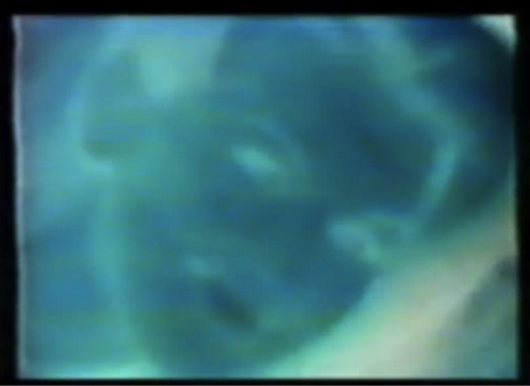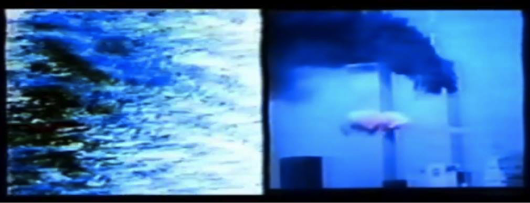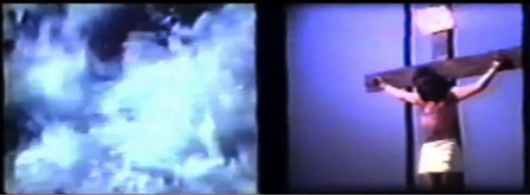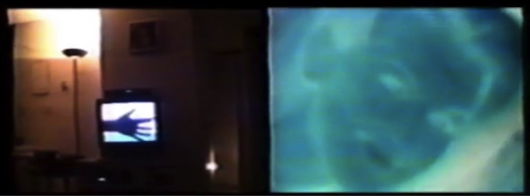 The films and videos of Willie Varela have in the past reflected the artist’s terror and outrage. Since the beginning, Varela’s work has dealt in scenes of daily life (in El Paso and San Francisco), an autobiographical sensibility (which casts him, like so many artists, under the sign of a bleeding Christ), and a plastic manipulation, through cinematography and editing, that aspires to abstraction. While these characteristics of Varela’s work have often been set to the service of love, charity and the noble aspiration of trading visions and experiences, they are also marked by a pageant of death, a legacy of wounds, and a fury, provoked by injustice and the devaluation of human life and perception.
The films and videos of Willie Varela have in the past reflected the artist’s terror and outrage. Since the beginning, Varela’s work has dealt in scenes of daily life (in El Paso and San Francisco), an autobiographical sensibility (which casts him, like so many artists, under the sign of a bleeding Christ), and a plastic manipulation, through cinematography and editing, that aspires to abstraction. While these characteristics of Varela’s work have often been set to the service of love, charity and the noble aspiration of trading visions and experiences, they are also marked by a pageant of death, a legacy of wounds, and a fury, provoked by injustice and the devaluation of human life and perception.
This Burning World (2004) is Varela’s response to, among other things, the 9/11 terror attacks. But put more broadly, it is a vision of an ossifying global society, driven toward death, terrorism, environmental destruction, aspiring toward the end of life on earth. Varela gathers images that reflect mortality—graphic medical procedures, pornography, news images of the towers falling. The world that he shows is one of greed and death; there is no reprieve. This stance is intensified by the work’s dual screens, a diptych of onrushing horrors.
Synthesized televisual signals, sometimes forming symmetries, combine with hand-painted film strips, painted a messy, bloody red, to form a dominant theme. Against this, scenes of professional wrestling, the fated Kennedy motorcade, Ku Klux Klan rallies, an invasive eye operation, and planes colliding with the World Trade Center, come to embody the title, a burning world of miseries, all the worst of humanity. Late in the video we are confronted with the word ‘redemption’, cast in the commercial lettering of a storefront name; even redemption has been copyrighted.
This Burning World is largely unified with Varela’s other work in video—his rhythms stagger as if a series of still images, and his manipulation of contrast emphasize the plastic qualities of digital renderings of light. These acts reflect Varela’s embrace of the elasticity of video time, which can stretch in infinitesimal ways but which soon no longer resembles an imitation of life; and of the bleed of video light, which is distinct in its flatness, in its natural consonance with commercial images. The work rejects depth, in part because it has been assembled out of surface-deep images, rephotography and ready symbols; but it also rejects depth in such a way that the dual screens become inflexible, so that the video images assume the impenetrable bas-relief of stone carvings.
Varela’s use of the diptych form suggests many things: a Warholian endorsement of dispersed attention, a citation to image-in-image news media, an act of forced similitude. Unlike Warhol’s treatment of the diptych, Varela is not ambivalent to these images, which shift between personal observation, archival materials, commercial and news images, all cited to state an unambiguous outrage. In practice, the dual screen manifests as polyphony, occasionally receding into pure abstraction, and the calming effect of these abstract images—of pure white and blue symmetries, or of light patterns and refractions, or even just a pulsing screen—are countered by our confrontation with scenes that devalue life and perception. But to counter is not necessarily the intention in joining these screens; this is not a game of contrasts between rich valuations of human perception and scenes of despair. Instead, the whole of it is weighted with heavy omens, that this age of cruelty and menace is still only in its infancy.
Filmography
This Burning World (Willie Varela 2004)